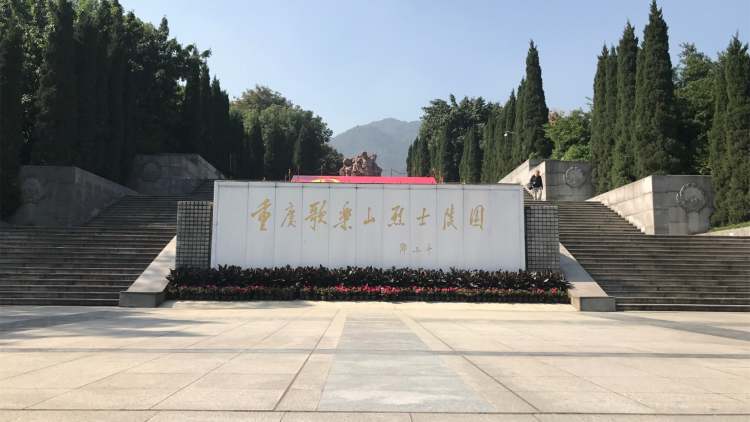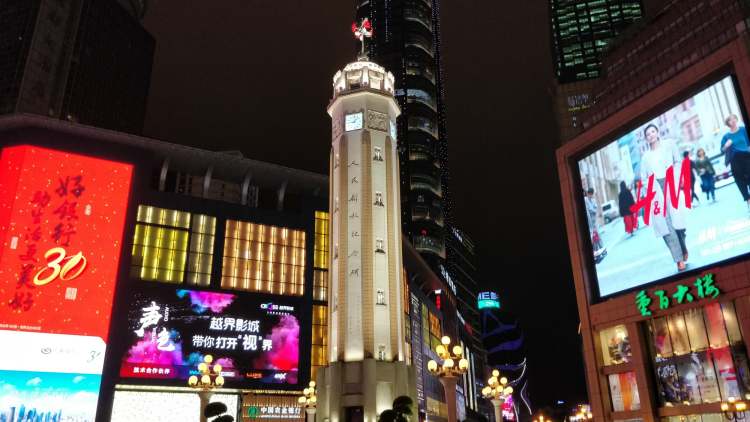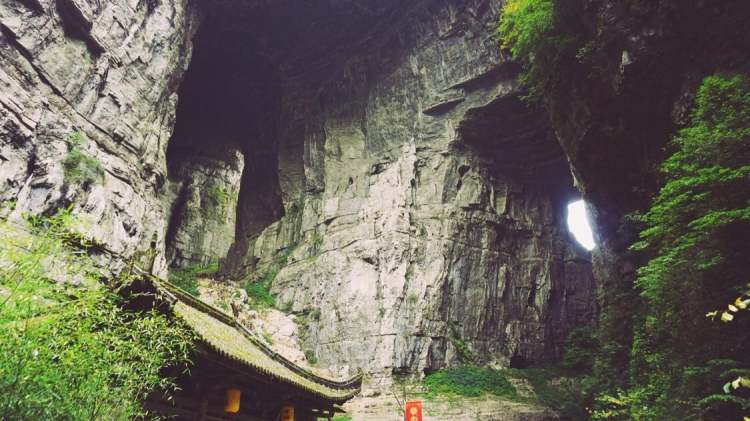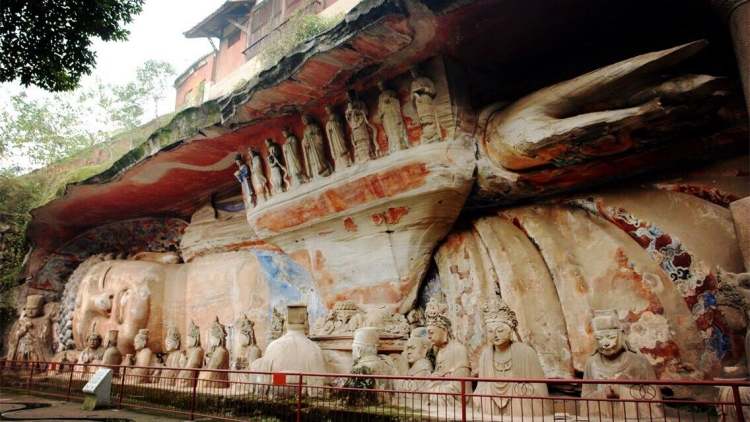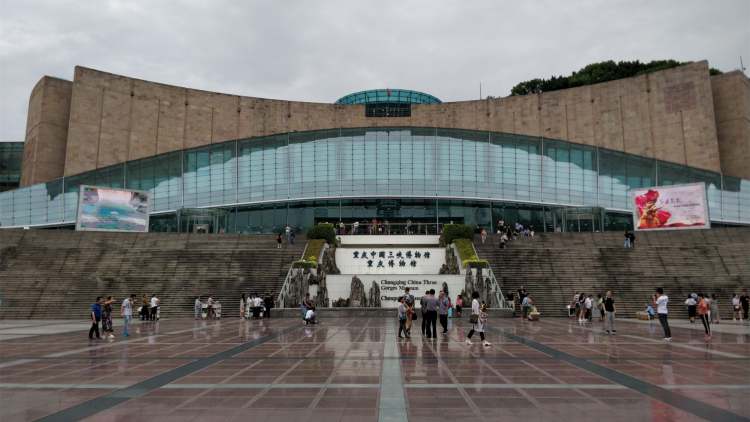Zhongliang Mountain extends into the part of Shapingba District of Chongqing that is Geyue Mountain, the ancient book "Huayang National Chronicles" has the record of "Dayu will be the princes in Tu Mountain, summon all the guests to sing and enjoy this", some ancient Yu historians think that Tu Mountain is Gele Mountain, and because of "Song is happy here" to determine the name of the mountain from this. Geyue Mountain is known as "the first peak in western Chongqing, the emerald of the mountain city", and is one of the "lung lobes" of Chongqing. Needless to say, the beautiful scenery here is needless to say, but what is more worthy of tourists' attention is the Chongqing Geyue Mountain Martyrs Cemetery here, which has two scenic spots: the very famous Bai Mansion and the Dregs Cave Concentration Camp.
During the period of the Kuomintang government, the headquarters, radio station, and prison of the "Kuomintang Military Survey and Statistics Bureau" were located in the current Chongqing Geyue Mountain Martyrs Cemetery. On the eve of the Kuomintang's withdrawal from the mainland, more than 300 revolutionaries who had been imprisoned in the Bai Mansion and the Dregs Cave concentration camp were massacred, and the "27 November" bloody case shocked China and the rest of the world. Famous communists Luo Shiwen, Che Yaoxian, Jiang Zhuyun, and famous generals Yang Hucheng and Huang Xiansheng were all killed here.
After the founding of the People's Republic of China, the Chongqing Municipal People's Government built a martyrs' cemetery and a martyr's monument to commemorate the revolutionary martyrs who were killed in the Bai Mansion and the Dregs Cave Concentration Camp. The Chongqing Sino-US Cooperation Institute Concentration Camp Meijiang Crime Exhibition Hall, established in 1963, was the predecessor of the Chongqing Geyue Mountain Martyrs Cemetery, which was renamed in 1984 and inscribed by Deng Xiaoping. Visitors enter the cemetery's Daying Gate to see the original Kuomintang parade ground that has become a green belt, the "Immortal" relief is located in the east of the parade ground, and the north of the relief is the Hongyan Soul Exhibition Hall covering an area of 1159 square meters. There are 490 pictures, 108 objects and a half-scene painting of the "11.27" massacre in the main exhibition hall, which shows in detail the past deeds of the Kuomintang military concentration camp.
White Mansion:
Bai Mansion was once the suburban villa of the Sichuan warlord Bai Ju, because Bai Ju claimed to be a descendant of Bai Juyi, this villa was named "Xiangshan Villa" by borrowing Bai Juyi's "Xiangshan Jushi" alias. The villa was later bought by Dai Li, a special agent of the Kuomintang military command, and converted into a prison.
After the establishment of the Sino-US Special Technical Cooperation Institute in 1943, the White Mansion became the third guest house of the Sino-US Cooperation Institute. The internal "political prisoners" were arranged to be relocated, and Shen Zui, the chief of the General Affairs Department of the Military Command, chose the Dregs Cave as the new site for the "political prisoners" in the former Bai Mansion Detention Center. After the Sino-US Cooperation Institute was abolished, the "political prisoners" returned to the White Mansion in April 1947, but in December of the same year, the prisoners were reincarcerated in the Dregs Cave. The White Mansion and the Dregs Cave are known as the "two living coffins", but there is a difference between the two, and generally speaking, the "political prisoners" who are held in the White Mansion are high-profile "political prisoners". Huang Xiansheng, Zhou Junshi, Liao Chengzhi, Song Qiyun, Xu Linxia and his wife, and their youngest son Song Zhenzhong ("Little Radish Head") were all imprisoned here.
The White Mansion has two floors, but only one floor is open, displaying the tokens and life deeds of the revolutionaries of those years. The air-raid shelter in the rear was converted into a torture cave by the Kuomintang, and now the red scenery inside restores the bloody atmosphere of the torture cave in those years.
Dregs Cave Concentration Camp:
The dregs cave was originally a small coal kiln on the outskirts of Chongqing, and its location was very hidden. After the owner of the original slag cave was forced to death by the Kuomintang military agents, it became a prison. Today's Dregs Cave Concentration Camp retains its previous layout, divided into two courtyards, the outer courtyard used to be the Kuomintang office, torture room, etc., and the inner courtyard has 1 wind dam, 16 men's prisons, and 2 women's prisons. On the wall of the inner courtyard, it is reproduced that the Kuomintang spies deliberately wrote on the wall: "Youth is gone, think carefully, recognize this time and here, don't be obsessed." ", "The maze is boundless, turning back is the shore", "Quiet patience, no complaints, no worries". The cells on the first floor of the inner courtyard have been converted into exhibition rooms, displaying documents and objects, introducing the situation of imprisoned revolutionaries in more detail, and one of the exhibition rooms also has audio and video materials, which is a more comprehensive experience. On the second floor, there are some rooms that reproduce the scene of the prison cell at that time, which are old but very neat. During the November 27 massacre, more than 200 revolutionaries imprisoned in the Dregs-dong concentration camp were shot and killed, and only 15 escaped.
Information Reference
White Mansion: Free
Opening hours: 8:30-17:00 (Closed on Mondays)
Dregs Cave Concentration Camp: Free
Opening hours: 8:30-17:00 (Closed on Mondays)



